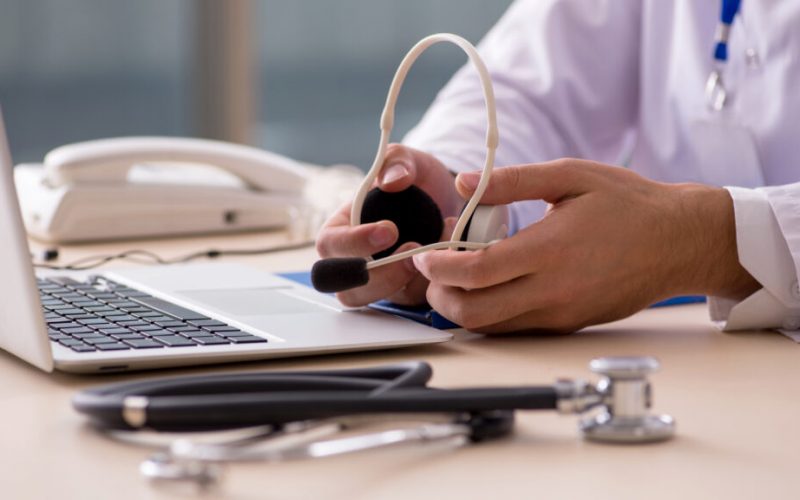
Do you know that Telehealth make it possible to access health-related services and information with the help of telecommunication technologies? With just a phone call or video call away from wherever you are, Telehealth connects you to the best of health care and support. Instead of having a face-to-face conversation with healthcare experts and professionals, patients can attend appointments virtually and digitally.
According to a stat from digitalhealth.gov.au, 95.9 million telehealth services are delivered between 13 March 2020 and 12 February 2022 to 16.8 million patients alongside 91,087 healthcare practitioners. More and more people have found it extremely useful, mainly due to the recent pandemic that changed how people communicate in the new normal. And with that, let us look at how Telehealth works and how it benefits you as a whole.
An overview of the telehealth
Generally, Telehealth is a method for patients to receive health-related services, support and consultation from the comfort of their home through information and communications technologies. It is a safe approach to replace any face-to-face healthcare appointments, lowering the risk of close contact amid the new normal. By connecting with your healthcare providers via your mobile phone, tablet, laptop or desktop, you can save the troubles from driving all the way to physical locations.
Types of telehealth
Patients or people who require health-related support of any form can reap the benefits of Telehealth in 3 different ways. Discover how these different types of Telehealth provide convenience catered to participants’ varied needs.
Live video or virtual conferencing
As the most sought-after type of Telehealth, patients can book appointments online and get in touch when the time comes. Patients and healthcare experts can chat over mobile phones, tablets, laptops, or desktops. This form of Telehealth service is suitable for patients who possess less physical data to be collected. For instance, patients who require Occupational Therapy and Speech Pathology can undergo appointments via Telehealth. In addition, video conferencing allows hassle-free arrangements among patients who live in remote areas.
Store-and-forward
Asynchronous Telehealth, also known as store-and-forward in layman terms, involves forwarding images or video clips of affected areas to healthcare practitioners. This form of Telehealth is an excellent way for doctors, especially dermatologists, to observe skin-related concerns. And from there, they are able to diagnose without any face-to-face consultations. Simply wait for the doctor’s replies with this store-and-forward approach.
Remote patient monitoring
Remote Patient Monitoring, or RPM, in short, is when monitoring of a patient’s conditions can be done via electronic devices such as the Apple Watch. Doctors can monitor and track patients’ current conditions, such as their heart rates. In addition, specialized devices that gather information such as blood pressure and so much more can be sent over to patients, thus making track and trace accessible. Rather than relying on the conversation itself, doctors will gain more insights into the patients’ health circumstances.
Benefits of the telehealth
In this ever-evolving era of digital transformation, Telehealth has revolutionised how people access healthcare. With Telehealth, Australia’s healthcare system is more readily available for different kinds of health-related services and support needed among the patients.
Accessibility
For patients who are feeling unwell to travel all the way to clinics or hospitals, Telehealth connects them with a consultation virtually. With a mobile gadget or digital device at hand, Telehealth made healthcare possible in the comfort of own home. In addition, people who are in need of health-related support can gain continuous assistance during difficult times. Furthermore, Telehealth benefits patients from rural areas who find it challenging to obtain specific aid in the cities.
Time-saving
Speaking of saving the trips among patients from remote areas or other states, Telehealth saves their or families’ time from the hassle of driving a long distance. Moreover, no more queueing up and waiting for your turn in clinics or hospitals full of people. Instead, with just a few clicks on electronic devices or mobile communication gadgets, healthcare experts can help patients feel better with information, diagnostic, medicine prescriptions and other forms of assistance virtually.
Safety
Telehealth comes in handy, especially during the Covid-19 pandemic. Besides the conveniences it brings, Telehealth is effective in reducing the spread of dangerous illnesses. Instead of being in a space full of sick people, get non-emergency health services safely indoors or from home. In addition, healthcare professionals and experts get to treat patients from their home offices safely.
Professional
Rest assured that Telehealth services and support are delivered by healthcare experts who are qualified in doing so. Telehealth brings patients in need of health-related support with an assemblage of professional and skilled practitioners. Their services are as effective as the walk-in sessions, bringing their pieces of knowledge and expertise virtually with ease. Also, this simplified and speedy method of getting support does not diminish their expertise quality at all.
Comfort
Telehealth comes in handy for those who have difficulties getting up from bed due to sickness. You get to seek health-related support or information from the comfort of your seating area or bed. Likewise, it ensures relief among patients with anxiety, agoraphobia or other phobias that prevent them from seeking doctors’ assistance. Attending virtual doctor’s appointments supports patients with a busy schedule. For example, if you cannot take leave from work, you can talk to healthcare experts in your workspace with an internet connection.
Telehealth —— A new way to access healthcare
The widespread application of Telehealth indeed has its reasons, and the long-term benefits it brings to the healthcare system are vital for whatever comes next. Make your Telehealth appointment much easier than it is by keeping your doubts and questions prepared. In addition, it is best to have all of your information ready when you are scheduling an appointment. It is time to realize the power of digital transformation that leads to Telehealth and access to healthcare support and services from the comfort of your own home.





